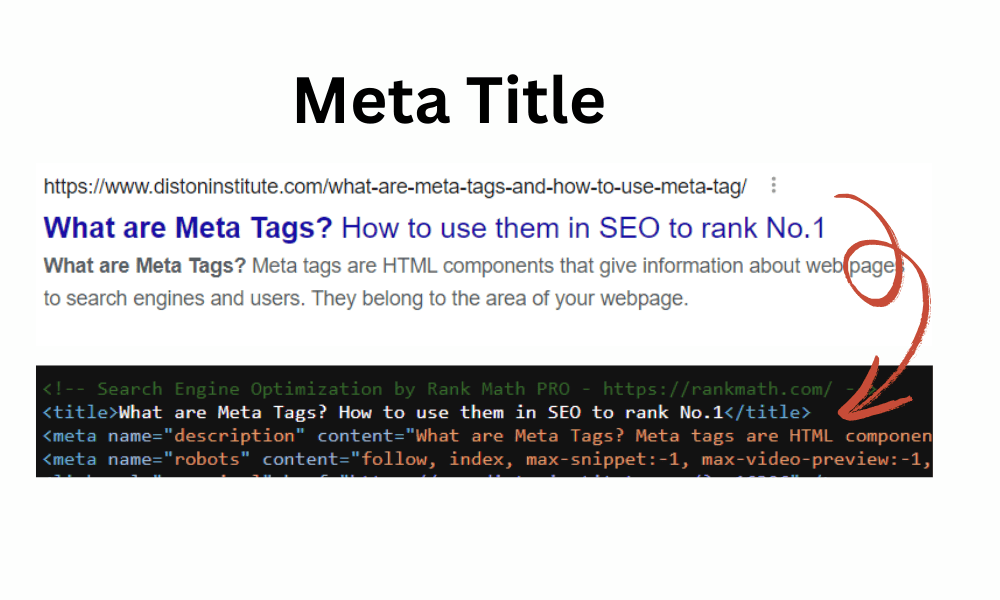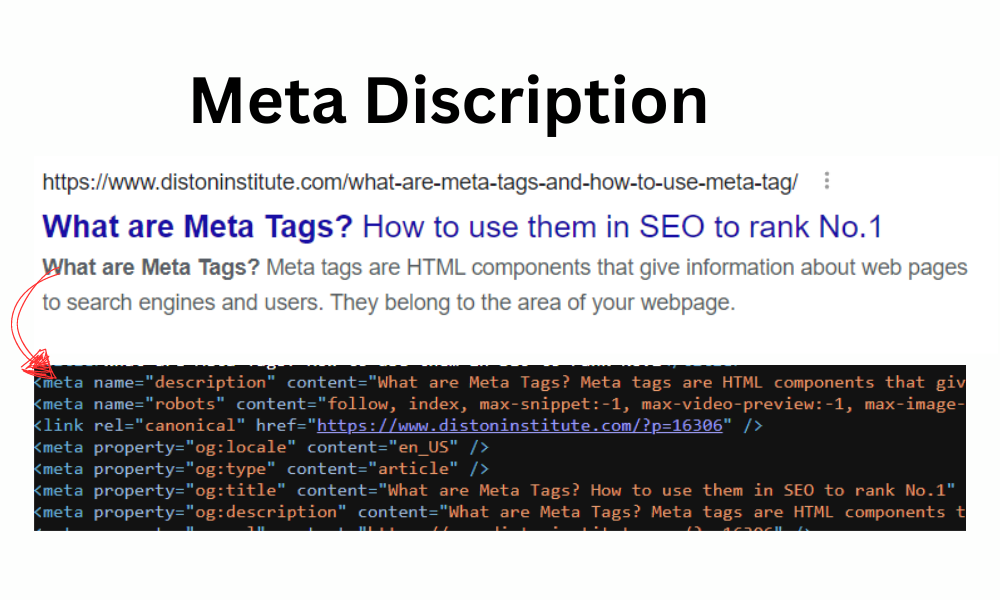What are meta tags? How do you utilise them to get higher rankings on Google? Meta tags are an important yet frequently ignored search engine optimisation (SEO) component. These unseen pieces of code are not visible on your website, but they play an important part in how search engines index your content and how people perceive your site in search results.
In this article, we will explain what are meta tags. Why they are important, and provide you with practical tips and rules for crafting the most effective meta tags to boost your website’s on- page SEO performance.
What Are Meta Tags?
Meta tags are HTML elements that provide structured metadata about a web page. They don’t appear on the visible page but are embedded in the page’s source code. Meta tags help search engines understand what the page is about, making it easier for them to index and rank your site in search engine results.
Why Are Meta Tags Important for SEO?
Meta tags are important because they influence how your page is indexed by search engines and how it is presented to users. Optimised meta tags can increase visibility, improve click-through rates (CTR), and drive more organic traffic to your site.
Types of Meta Tags
What is a Meta Title?
The meta title, also known as the title tag, is arguably the most important meta tag for SEO. This is what appears as the clickable headline in search engine results. It tells both users and search engines what your page is about.
How to Write a Proper Meta Title
Tips for Writing Effective Meta Titles:
- Keep It Under 60 Characters – Search engines typically display only the title’s first 50-60 characters. If your title is too long, it will be cut off, affecting the user’s ability to understand your page’s content.
- Use Your Main Keyword Early – Place your primary keyword near the beginning of the title tag for better visibility in search results.
- Make It Compelling – Your title should be engaging and entice users to click. Avoid generic or vague titles, and instead, aim for something that grabs attention.
- Include Your Brand Name – If applicable, add your brand name at the end of the title to build recognition.
Rules for Writing Meta Titles:
- Length: 50-60 characters.
- Avoid Keyword Stuffing: Only include relevant keywords, and avoid overloading your title with too many of them.
- Clarity: Make sure the title reflects the page’s content to avoid confusing users and increasing bounce rates.

What is a Meta Description?
The meta description is a short summary of a page’s content that appears below the title in search results. It’s designed to give users a preview of what they can expect from the page and encourage them to click through to the website.
How to Write a Proper Meta Description
Best Practices for Crafting Meta Descriptions:
- Keep It Between 150-160 Characters – Similar to title tags, search engines truncate descriptions that are too long. Aim for 150-160 characters to ensure the entire description is visible.
- Incorporate a Call-to-Action (CTA) – Encourage users to take action, whether it’s to “Learn More,” “Buy Now,” or “Read the Full Article.”
- Include Relevant Keywords – Keywords in meta descriptions aren’t a ranking factor, but they are bolded in search results, which can help attract attention and increase CTR.
- Focus on User Intent – Write your description with the user in mind. What are they looking for? What will they find on your page?
Rules for Meta Descriptions:
- Length: 150-160 characters.
- Relevance: Make sure the description is directly relevant to the page content.
- Action-Oriented: Use verbs and persuasive language to motivate users to click.

Other Important Meta Tags
Robots Meta Tag
The robots meta tag tells search engines how to handle a page. For instance, it can instruct search engines whether or not to index a page or follow the links on it. Typical values include:
- index/no index: Whether the page should appear in search results.
- follow/no follow: Whether the search engine should follow the links on the page.

Viewport Meta Tag
The viewport meta tag is crucial for mobile optimization. It ensures that your website displays correctly on mobile devices by controlling the page’s scaling and layout.
Example:

Open Graph and Twitter Card Tags
Open Graph tags control how your website content appears when shared on social media platforms like Facebook. Similarly, Twitter Card tags ensure that content is displayed attractively when shared on Twitter.
Key Open Graph Tags:
- og– The title of your page for social sharing.
- og– A brief description of the page.
- og– The image that will be displayed when the page is shared.
The Role of Meta Tags in User Experience
Impact on Click-Through Rate (CTR)
Optimized meta tags can significantly improve your CTR. A clear, concise, and compelling meta title and description will entice users to click through to your site.
How Meta Tags Affect Bounce Rates
Accurate and relevant meta tags help set expectations. If users click on your link based on a meta tag and find unrelated content, they’re more likely to leave quickly, which increases your bounce rate. Always make sure your tags reflect the actual content of your page.
Common Mistakes in Meta Tag Optimization
Overstuffing Keywords
One of the biggest mistakes is cramming too many keywords into your meta tags. This can lead to keyword stuffing, which is not only ineffective but can also harm your SEO ranking.
Duplicate Meta Tags
Each page should have unique meta tags. Duplicate tags across multiple pages can confuse search engines and harm your SEO efforts.
Missing Meta Tags
Forgetting to add meta tags can leave your pages at a disadvantage. Without a proper meta title or description, search engines will automatically generate one, which might not be as effective in attracting clicks.
Tools for Meta Tag Analysis and Optimization
- Yoast SEO – A popular WordPress plugin that provides real-time feedback on your meta tags.
- SEMrush – Offers in-depth analysis of your meta tags and provides recommendations for improvement.
- Ahref – A very easy-to-use SEO tool that helps you audit and optimize your meta tags for better search performance.
Conclusion
Meta tags may not be the most visible part of your website, but they play a vital role in how your site is indexed and displayed on search engines. By following best practices for writing meta titles, descriptions, and other essential tags, you can improve your site’s visibility, attract more traffic, and boost your SEO performance.
People frequently ask questions related to what are meta tags.
What is the most important meta tag for SEO?
The meta title tag is the most important as it directly influences both SEO rankings and user clicks.
How long should a meta description be?
Ideally, it should be between 150-160 characters.
Do meta keywords still matter?
No, meta keywords are largely obsolete in modern SEO.
Can meta tags affect user behavior?
Yes, well-crafted meta tags can improve CTR and reduce bounce rates by accurately describing the page content.
What tools can help me optimize meta tags?
Tools like Yoast SEO, SEMrush, and Ahrefs are excellent for analyzing and optimizing meta tags.
